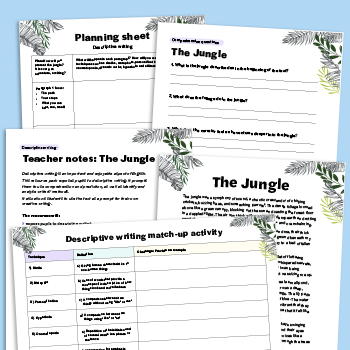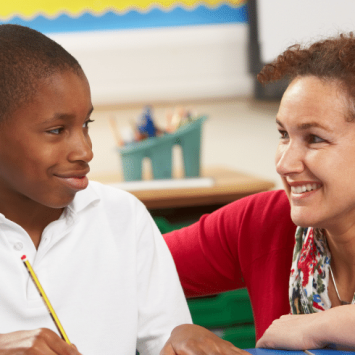Oracy in the classroom – Let’s help our students become better speakers

Our students will need to be confident speakers in their professional lives, observes Jenny Hampton – so why don’t we teach oracy properly?

Oracy in the classroom is about talk. So why, as a secondary school English teacher, do I want to scream? Why does the Spoken Language Endorsement occur in a vacuum of education policy for talk?
Student: ‘So it’s really important, but not part of our overall GCSE grade?’
English teacher: ‘Yes. Presenting to an audience is a highly valuable life skill, and something that you may need to do in a whole range of education and workplace scenarios. It will not contribute to your English Language GCSE grade. You will receive it separately, and not as a numerical grade.’
Student: ‘Oh.’
I (mostly) love teaching the Spoken Language Endorsement part of the course – that is, a presentation on a specific topic lasting no longer than 10 minutes, including questions from listeners. But there’s always that point where we reach the conversation about it not being part of students’ main GCSE grade.
While students do eventually buy in and work on their presentations, they know that come results day, no one will ask about it. And that when they get to further education, it will be the numerical grades – and not the pass, merit and distinction they received for their SLE presentation – that matter.
A downgraded skill
In 2015, this spoken language component replaced ‘speaking and listening’ in the new GCSE as part of the ‘Govian’ reforms; Ofqual told us that it wouldn’t form part of the final grade. It therefore doesn’t factor into a school’s exam results profile which, in the current accountability structure of our schools, means it was spectacularly downgraded as a skill.
A 2021 report produced by The Centre of Education and Youth and Oxford University told us that the term ‘spoken language’ is ‘barely featured’ on Ofsted’s report recommendations. Their analysis highlighted that “Oracy does not feature prominently in Ofsted’s reporting,” but the issue extends beyond the regulator. The same report further found that only 23% of secondary teachers were confident in their understanding of the National Curriculum’s ‘spoken language’ requirements.
A separate report by the Oracy All-Party Parliamentary Group Inquiry meanwhile found that, “The status and provision of oracy education in England today falls significantly short” of the Group’s vision that, “All children and young people should benefit from high-quality oracy education.”
It’s become increasingly clear that talk, in all its forms, is far from being at the heart of our educational culture.
Widening the gap
Secondary school teachers know that not all students attended, or consistently attended their online lessons. I won’t forget how deeply uncomfortable and quiet some students visibly seemed from our side of screen in those sessions.
The aforementioned Oxford University report noted that, “Teachers working in state-funded settings were more than twice as likely as teachers working in private schools to say online teaching had a ‘significantly negative’ impact on pupils’ oracy.”
This side of COVID 19, how often do all students get to readily contribute in groups, pairs or whole class discussions? Who is struggling the most? Is there a noticeable gender divide? How wide is the gap between those in receipt of Pupil Premium and their peers in terms of vocabulary and talk confidence?
A huge body of evidence tells us that as far as latter is concerned, the gap is wide – but what does it look like in your school? Can students effectively manage exploratory group talk? How many students talk about experiencing fear and anxiety in the run-up to delivering their spoken language GCSE presentation?
A devastating picture
In May 2020, my daughter turned 2 – a crucial time in her language development. We celebrated her birthday as an immediate family unit socially distanced from everyone else in a breezy park. We waved nervously to another family we knew who also happened to be there. She didn’t see any members of her extended family, nor any peers from her childcare setting.
As I write these words, she is now in her final term of reception, and happily celebrated her fifth birthday last month with all of her classmates. However, much of the talk amongst parents there still dwelt on the impact of the pandemic on our lockdown toddlers.
And what about the students with SEND, pre-teens and EAL students? What impact did lockdown have on them? The CFEY and Oxford University report cites polling that paints, “A devastating picture regarding the pandemic’s impact” on children’s oracy skills.
We shouldn’t be surprised. There’s no reason to expect a positive outlook when our students stepped straight from social distancing and back into school cultures that don’t put oracy in the classroom on the same footing as literacy and numeracy.
What should we do about oracy in the classroom?
After screaming in frustration at the ongoing policy vacuum, we can begin to take some meaningful steps towards improving matters as teachers, leaders and advocates for young people.
We can start by a developing a heightened awareness of talk opportunities in our classrooms. Who is speaking, and when can we increase those opportunities? Some strategies might include ‘no hands up’ time, think-pair-share activities and utilising group feedback.
Could your class’ group work activities benefit from guidelines, modelling or sentence starters to facilitate discussion? We can also think about our curriculum. Could we build up students’ confidence in presenting via the gradual introduction of shorter speaking tasks at KS3? This doesn’t have to be just in English, but across our all subjects.
Another step we could take is to analyse the results of our spoken language components for yearly trends. We can probe how well our PP-eligible students are faring in this part of the course. Let’s all demand CPD opportunities and research time, with support from the brilliant organisations and advocates of oracy in the classroom that are among the biggest voices currently clamouring for change, such as Voice 21 and Oracy Cambridge.
We can start the conversation with our colleagues and senior leaders. Let’s seek to involve students more actively in assemblies, and explore other opportunities for public speaking. We can find out what our students think about their oracy development via class surveys, exit slips and questionnaires.
So let’s give up on the idea of simply screaming. Let’s instead get proactive about starting conversations with colleagues and students alike. We need to develop as many speaking opportunities as we can, step by step, to fill the vacuum.
Oracy in the classroom resources
Voice21
Provides case studies, research, CPD opportunities and guidance – the latter of which includes Voice21’s own ‘Oracy Benchmarks’.
Oracy Cambridge
Oracy Cambridge is a helpful source of downloadable resources. This includes self talk and peer reflection tools, as well exemplar discussion guidelines and The Oracy Skills Framework and Glossary.
Education Endowment Foundation
Find detailed impact reports pertaining to oracy studies and related projects in schools at EEF.
The Oracy All-Party Parliamentary Group
This is a useful destination for case studies detailing progress in oracy in the classroom in primary and secondary schools.
Jenny Hampton (@brightonteacher) is an English teacher, literacy lead and former SLE (literacy)











